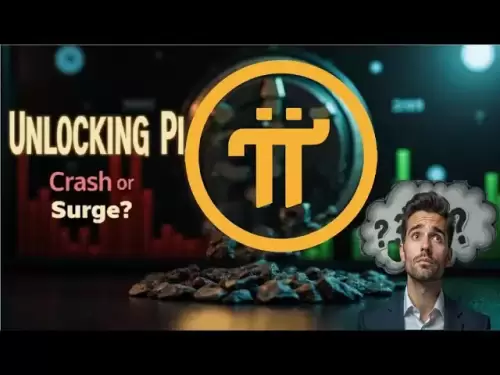-
 Bitcoin
Bitcoin $107,814.2183
1.08% -
 Ethereum
Ethereum $2,463.5660
1.32% -
 Tether USDt
Tether USDt $1.0006
0.02% -
 XRP
XRP $2.1904
0.02% -
 BNB
BNB $658.4950
1.31% -
 Solana
Solana $150.0570
1.53% -
 USDC
USDC $1.0002
0.01% -
 TRON
TRON $0.2823
1.22% -
 Dogecoin
Dogecoin $0.1634
2.68% -
 Cardano
Cardano $0.5657
3.30% -
 Hyperliquid
Hyperliquid $38.6646
-0.70% -
 Bitcoin Cash
Bitcoin Cash $501.8244
-2.85% -
 Sui
Sui $2.7979
3.64% -
 Chainlink
Chainlink $13.1942
1.21% -
 UNUS SED LEO
UNUS SED LEO $8.9470
0.44% -
 Avalanche
Avalanche $17.7386
2.23% -
 Stellar
Stellar $0.2324
-0.87% -
 Toncoin
Toncoin $2.8435
1.38% -
 Shiba Inu
Shiba Inu $0.0...01148
2.34% -
 Litecoin
Litecoin $85.6186
0.37% -
 Hedera
Hedera $0.1490
1.37% -
 Monero
Monero $322.8553
1.63% -
 Polkadot
Polkadot $3.3791
1.39% -
 Dai
Dai $1.0002
0.02% -
 Bitget Token
Bitget Token $4.5749
0.75% -
 Ethena USDe
Ethena USDe $1.0002
0.00% -
 Uniswap
Uniswap $7.1451
2.66% -
 Aave
Aave $268.4133
1.40% -
 Pepe
Pepe $0.0...09614
1.94% -
 Pi
Pi $0.4952
0.74%
Bybit leverage shorting tutorial
To leverage short cryptocurrencies on Bybit, traders must create an account, fund it, enable leverage, select a trading pair, choose order type, specify order parameters, monitor the position, and close the order to realize profits or mitigate losses.
Nov 20, 2024 at 05:52 am

Bybit Leverage Shorting Tutorial: A Comprehensive Guide
Introduction:
Leverage shorting is an advanced trading strategy that allows traders to leverage their trading positions and potentially increase profits or mitigate losses. Bybit, a leading cryptocurrency exchange, offers leverage shorting features to its users. This tutorial will provide a comprehensive guide on how to leverage short cryptocurrencies on Bybit, helping traders navigate the complexities of this strategy effectively.
Prerequisites:
Before engaging in leverage shorting, it is crucial to meet the following prerequisites:
- Understanding of Cryptocurrency Markets: Traders must possess a thorough understanding of cryptocurrency markets, including market trends, volatility, and risk factors.
- Risk Management Skills: Leverage shorting carries significant risk, and traders must have robust risk management strategies to mitigate potential losses.
- Trading Experience: This strategy is recommended for experienced traders who are familiar with advanced trading techniques.
Steps to Shorting Cryptocurrency Using Leverage on Bybit:
1. Setting Up a Bybit Account and Funding It
- Create a Bybit Account: Visit the Bybit website and create a trading account.
- Fund Your Account: Transfer cryptocurrency or fiat currency to your Bybit account to provide the necessary capital for trading.
- Enable Leverage: Go to the "Account & Security" section in your account settings and enable leverage trading. Select the desired leverage ratio (e.g., 5x, 10x, 20x) based on your risk tolerance and trading strategy.
2. Choosing a Trading Pair and Order Type
- Select a Trading Pair: Choose the desired trading pair, such as BTC/USDT or ETH/USDT, that you want to short.
- Choose an Order Type: Bybit offers various order types for shorting, including Market Orders, Limit Orders, and Stop Orders. Select the order type that best suits your trading strategy and risk profile.
3. Placing a Short Order
- Enter Order Parameters: Specify the quantity of the cryptocurrency you wish to short, the leverage ratio, and the entry price.
- Adjust Leverage: Consider the risks associated with different leverage ratios and adjust them accordingly. Higher leverage ratios amplify both potential profits and losses.
- Review Order Details: Double-check all order details, including the trading pair, order type, entry price, and leverage ratio, before confirming the trade.
4. Monitoring and Managing Your Short Position
- Monitor Position: Track the performance of your short position in real-time using the "Positions" section in your Bybit account.
- Adjust Margin Levels: Ensure that your account has sufficient margin to maintain your short position. Bybit may issue a Margin Call if the margin level falls below a certain threshold.
- Take Profit and Stop Loss: Set Take Profit and Stop Loss orders to automatically close your short position at predetermined profit or loss levels.
5. Closing Your Short Position
- Close Order: When it is time to close your short position, place a buy order for the same quantity of the cryptocurrency you shorted.
- Calculate Profit or Loss: The profit or loss from your short position is determined by the difference between the entry price and the closing price.
- Withdraw Funds: Transfer your profit or remaining funds from your Bybit account to your wallet or bank account.
Additional Tips for Leverage Shorting on Bybit:
- Start Small: Begin with small leverage ratios and gradually increase them as you gain experience and confidence.
- Manage Risk: Always prioritize risk management by using Stop Loss orders, monitoring margin levels, and adhering to trading disciplines.
- Limit Leverage: Avoid using excessively high leverage ratios, as this can magnify losses significantly.
- Stay Informed: Keep up-to-date with cryptocurrency market news, price movements, and technical analysis to make informed trading decisions.
Disclaimer:info@kdj.com
The information provided is not trading advice. kdj.com does not assume any responsibility for any investments made based on the information provided in this article. Cryptocurrencies are highly volatile and it is highly recommended that you invest with caution after thorough research!
If you believe that the content used on this website infringes your copyright, please contact us immediately (info@kdj.com) and we will delete it promptly.
- Robert Kiyosaki Still Bullish on Bitcoin: Why $107K is 'Cheap'
- 2025-07-02 20:30:12
- Coinbase, Liquifi, and Crypto M&A: What's the Deal?
- 2025-07-02 21:10:12
- XRP, SEC, and ETF Buzz: What's the Deal?
- 2025-07-02 22:10:11
- Nexo Drives into Crypto-Golf: A Digital Wealth Play on the DP World Tour
- 2025-07-02 21:10:12
- Crypto Down in July 2025? Decoding the Market's Mixed Signals
- 2025-07-02 21:30:12
- Arbitrum, DeFi, and TradFi: A New York Minute on the Future of Finance
- 2025-07-02 22:10:11
Related knowledge

How to identify the contract value range in combination with the market profile?
Jul 02,2025 at 10:56pm
Understanding the Market ProfileTo effectively identify the contract value range in combination with the market profile, it's essential to first understand what each concept entails. The market profile is a framework that helps traders visualize how price and time interact across a given period, typically a trading day or session. It provides insights i...

How to use the price slope to filter the false breakthrough signal of the contract?
Jun 20,2025 at 06:56pm
Understanding the Concept of Price Slope in Contract TradingIn contract trading, especially within cryptocurrency derivatives markets, price slope refers to the rate at which the price changes over a specific time period. It helps traders assess the strength and sustainability of a trend. A steep slope may indicate strong momentum, while a shallow slope...

How to determine the expected volatility of the contract through the volatility cone?
Jun 19,2025 at 12:28pm
Understanding the Basics of Volatility in Cryptocurrency ContractsIn the realm of cryptocurrency trading, volatility is a key metric that traders use to assess potential risk and reward. When dealing with futures contracts, understanding how volatile an asset might become over time is crucial for position sizing, risk management, and strategy developmen...

How to formulate a contract intraday trading plan in combination with the pivot point system?
Jun 21,2025 at 03:42pm
Understanding the Basics of Pivot Points in Cryptocurrency TradingPivot points are technical analysis tools used by traders to identify potential support and resistance levels. These levels are calculated using the previous day's high, low, and closing prices. In the context of cryptocurrency trading, where markets operate 24/7, pivot points help trader...

How to adjust the contract position ratio through the price fluctuation entropy?
Jun 22,2025 at 11:42am
Understanding Price Fluctuation Entropy in Cryptocurrency ContractsIn the world of cryptocurrency futures trading, price fluctuation entropy is a relatively new concept used to measure market volatility and uncertainty. It derives from information theory, where entropy refers to the degree of randomness or unpredictability in a system. In crypto contrac...

How to use the volume swing indicator to predict the contract volume-price divergence?
Jun 18,2025 at 11:42pm
Understanding the Volume Swing IndicatorThe volume swing indicator is a technical analysis tool used primarily in cryptocurrency trading to evaluate changes in volume over time. Unlike price-based indicators, this metric focuses solely on trading volume, which can provide early signals about potential market reversals or continuations. The key idea behi...

How to identify the contract value range in combination with the market profile?
Jul 02,2025 at 10:56pm
Understanding the Market ProfileTo effectively identify the contract value range in combination with the market profile, it's essential to first understand what each concept entails. The market profile is a framework that helps traders visualize how price and time interact across a given period, typically a trading day or session. It provides insights i...

How to use the price slope to filter the false breakthrough signal of the contract?
Jun 20,2025 at 06:56pm
Understanding the Concept of Price Slope in Contract TradingIn contract trading, especially within cryptocurrency derivatives markets, price slope refers to the rate at which the price changes over a specific time period. It helps traders assess the strength and sustainability of a trend. A steep slope may indicate strong momentum, while a shallow slope...

How to determine the expected volatility of the contract through the volatility cone?
Jun 19,2025 at 12:28pm
Understanding the Basics of Volatility in Cryptocurrency ContractsIn the realm of cryptocurrency trading, volatility is a key metric that traders use to assess potential risk and reward. When dealing with futures contracts, understanding how volatile an asset might become over time is crucial for position sizing, risk management, and strategy developmen...

How to formulate a contract intraday trading plan in combination with the pivot point system?
Jun 21,2025 at 03:42pm
Understanding the Basics of Pivot Points in Cryptocurrency TradingPivot points are technical analysis tools used by traders to identify potential support and resistance levels. These levels are calculated using the previous day's high, low, and closing prices. In the context of cryptocurrency trading, where markets operate 24/7, pivot points help trader...

How to adjust the contract position ratio through the price fluctuation entropy?
Jun 22,2025 at 11:42am
Understanding Price Fluctuation Entropy in Cryptocurrency ContractsIn the world of cryptocurrency futures trading, price fluctuation entropy is a relatively new concept used to measure market volatility and uncertainty. It derives from information theory, where entropy refers to the degree of randomness or unpredictability in a system. In crypto contrac...

How to use the volume swing indicator to predict the contract volume-price divergence?
Jun 18,2025 at 11:42pm
Understanding the Volume Swing IndicatorThe volume swing indicator is a technical analysis tool used primarily in cryptocurrency trading to evaluate changes in volume over time. Unlike price-based indicators, this metric focuses solely on trading volume, which can provide early signals about potential market reversals or continuations. The key idea behi...
See all articles

























































































